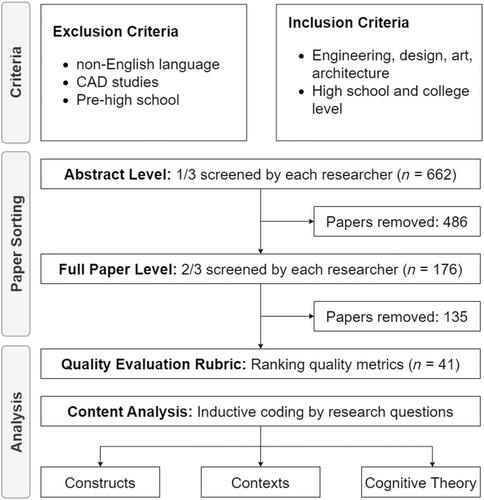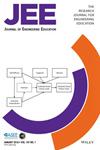Sketching exists in many disciplines and varies in how it is assessed, making it challenging to define fundamental sketching skills and the characteristics of a high-quality sketch. For instructors to apply effective strategies for teaching and assessing engineering sketching, a clear summary of the constructs, metrics, and objectives for sketching assessment across engineering education and related disciplines is needed.
This systematic literature review explores sketching assessment definitions and approaches across engineering education research.
We collected 671 papers from five major engineering and education databases at all skill levels for reported sketching constructs and metrics, cognition, and learning contexts. Based on the selection criteria, we eliminated all but 41 papers, on which we performed content analysis.
Engineering, design, and art emerged as three major disciplines in the papers reviewed. We found that sketching assessment most often employs metrics on accuracy, perspective, line quality, annotations, and aesthetics. Most collected studies examined beginners in undergraduate engineering design sketching or drawing ability tests. Cognitive skills included perceiving the sketch subject, creatively sketching ideas, using metacognition to monitor the sketching process, and using sketching for communication.
Sketching assessment varies by engineering discipline and relies on many types of feedback and scoring metrics. Cognitive theory can inform instructional activities as a foundation for sketching skills. There is a need for robust evidence of high-quality assessment practices in sketching instruction. Assessment experts can apply their knowledge toward improving sketching assessment development, implementation, and validation.



